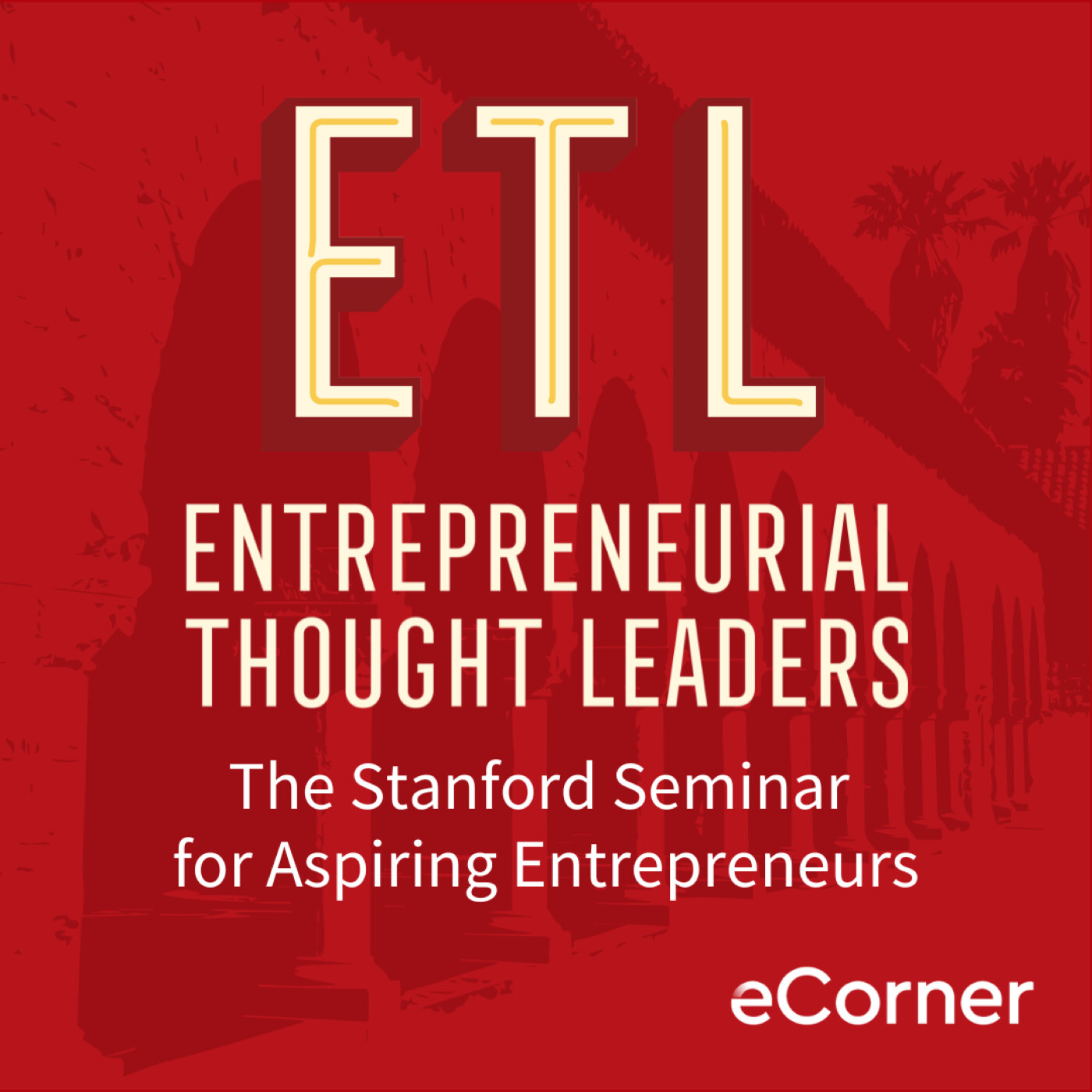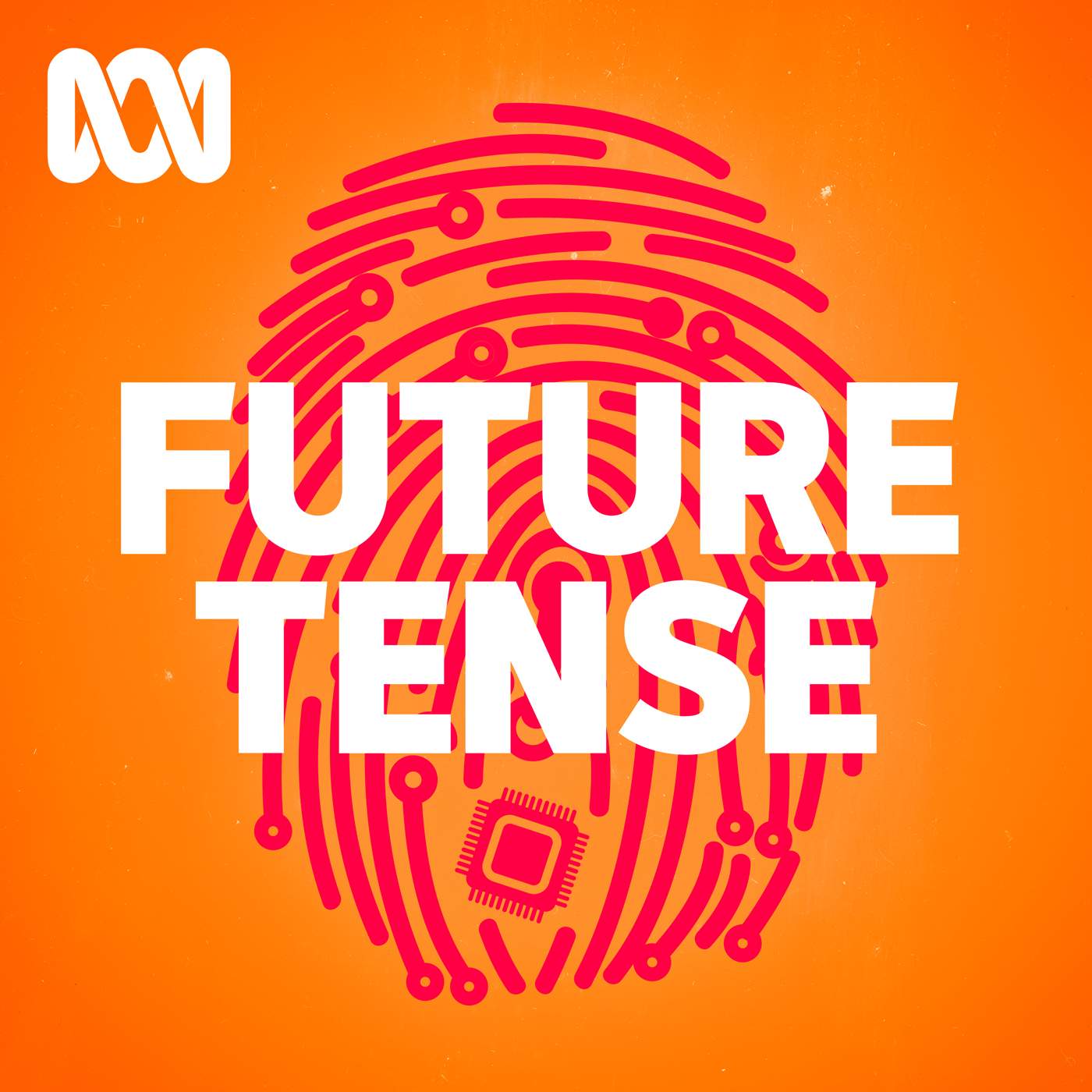
Heliox: Where Evidence Meets Empathy 🇨🇦
Join our hosts as they break down complex data into understandable insights, providing you with the knowledge to navigate our rapidly changing world. Tune in for a thoughtful, evidence-based discussion that bridges expert analysis with real-world implications, an SCZoomers Podcast
Independent, moderated, timely, deep, gentle, clinical, global, and community conversations about things that matter. Breathe Easy, we go deep and lightly surface the big ideas.
Curated, independent, moderated, timely, deep, gentle, evidenced-based, clinical & community information regarding COVID-19. Since 2017, it has focused on Covid since Feb 2020, with Multiple Stores per day, hence a sizeable searchable base of stories to date. More than 4000 stories on COVID-19 alone. Hundreds of stories on Climate Change.
Zoomers of the Sunshine Coast is a news organization with the advantages of deeply rooted connections within our local community, combined with a provincial, national and global following and exposure. In written form, audio, and video, we provide evidence-based and referenced stories interspersed with curated commentary, satire and humour. We reference where our stories come from and who wrote, published, and even inspired them. Using a social media platform means we have a much higher degree of interaction with our readers than conventional media and provides a significant amplification effect, positively. We expect the same courtesy of other media referencing our stories.
Heliox: Where Evidence Meets Empathy 🇨🇦
A Legal Crash Course on Divorce/Separation (B.C. Canada Edition)
There's a psychological concept called "coercive control" that helps explain what happened here. It's the use of tactics designed to isolate, intimidate, and dominate another person, often through seemingly mundane interactions. Refusing to communicate about schedule changes, interpreting every gesture as hostile, withholding medical information, creating chaos around a child's activities—these can all be forms of control disguised as principled stands.
The research on pets in abusive relationships is particularly illuminating. Animals become leverage precisely because the emotional bonds are so strong. The threat—explicit or implied—is always the same: comply, or lose what you love. Mrs. Glasson's eventual decision to stop trying to coordinate Toba exchanges wasn't surrender; it was what researchers call moving toward a "liberation frame," removing the tool of manipulation from the equation entirely.
References:
Glassen v Glassen, 2025 BCSC 640 (CanLII)
This is Heliox: Where Evidence Meets Empathy
Independent, moderated, timely, deep, gentle, clinical, global, and community conversations about things that matter. Breathe Easy, we go deep and lightly surface the big ideas.
Thanks for listening today!
Four recurring narratives underlie every episode: boundary dissolution, adaptive complexity, embodied knowledge, and quantum-like uncertainty. These aren’t just philosophical musings but frameworks for understanding our modern world.
We hope you continue exploring our other podcasts, responding to the content, and checking out our related articles on the Heliox Podcast on Substack.
About SCZoomers:
https://www.facebook.com/groups/1632045180447285
https://x.com/SCZoomers
https://mstdn.ca/@SCZoomers
https://bsky.app/profile/safety.bsky.app
Spoken word, short and sweet, with rhythm and a catchy beat.
http://tinyurl.com/stonefolksongs
Curated, independent, moderated, timely, deep, gentle, evidenced-based, clinical & community information regarding COVID-19. Since 2017, it has focused on Covid since Feb 2020, with Multiple Stores per day, hence a large searchable base of stories to date. More than 4000 stories on COVID-19 alone. Hundreds of stories on Climate Change.
Zoomers of the Sunshine Coast is a news organization with the advantages of deeply rooted connections within our local community, combined with a provincial, national and global following and exposure. In written form, audio, and video, we provide evidence-based and referenced stories interspersed with curated commentary, satire and humour. We reference where our stories come from and who wrote, published, and even inspired them. Using a social media platform means we have a much higher degree of interaction with our readers than conventional media and provides a significant amplification effect, positively. We expect the same courtesy of other media referencing our stories.
This is Heliox, where evidence meets empathy. Independent, moderated, timely, deep, gentle, clinical, global, and community conversations about things that matter. Breathe easy. We go deep and lightly surface the big ideas.
Speaker 2:Imagine your family is breaking apart. Well, it's incredibly painful, obviously. But beyond that, you've got these really tough decisions, right?
Speaker 1:Absolutely. Who gets the kids, the house, the money?
Speaker 2:And even the family pet. It's so charged, so complex. Honestly, it can feel overwhelming.
Speaker 1:It really can. But what if the legal system offered a way through? A path that, you know, prioritizes well-being instead of just blame.
Speaker 2:That's exactly what we're diving into today. We're looking at a fascinating case from British Columbia, Canada, Glasson v. Glasson. It was decided in April 2025.
Speaker 1:Yeah, it's a really good one. A real-world ruling that gives us a great window into how modern family law actually handles these very personal separation issues.
Speaker 2:And for this deep dive, we've got quite the stack of sources. The official court judgment, of course.
Speaker 1:Crucial. Plus, analyses from a legal firm, a news piece on BC's new pet custody laws.
Speaker 2:And even a psychological article. This one explores how pets can sometimes be, well, used as leverage in difficult dynamics.
Speaker 1:Which definitely comes up in this case.
Speaker 2:Right. So our mission today, we want to pull out the most important bits of knowledge from all this. We'll show you how the court decided everything. Pets, parenting plans, tricky finances.
Speaker 1:And reveal some surprising human elements behind those legal principles.
Speaker 2:Get ready for some aha moments, hopefully. Things that help you understand how family law is evolving without feeling buried in jargon.
Speaker 1:Okay, so let's unpack this first big idea. When you think divorce, maybe you still picture those dramatic courtroom scenes, right? Finding fault, someone to blame.
Speaker 2:Yeah, that's the classic image.
Speaker 1:But Glasson v. Glasson, this case really highlights a major shift away from that. It might actually surprise you.
Speaker 2:How so?
Speaker 1:Well, the Divorce Act in Canada, it technically only has one ground for divorce now. Marriage breakdown, that's it.
Speaker 2:One ground. So what about things like adultery or cruelty? We still hear about those.
Speaker 1:We do, but they're not separate grounds anymore. They're now just, well, factual circumstances you might use to prove the marriage has broken down. Does that make sense?
Speaker 2:Okay, so they're evidence, not the reason itself in the eyes of the law.
Speaker 1:Exactly. And the Glasson court really leaned into this. They referenced an older case, McPhail v. McPhail.
Speaker 2:Right. So it's not about playing the blame game anymore. Is that the main takeaway?
Speaker 1:That's pretty much it. The McPhail court called it the clear trend of the law to remove fault from most issues.
Speaker 2:Why the shift?
Speaker 1:Because arguing about fault, like cruelty or adultery, it's often just unnecessary. It prolongs the hostility, carries a stigma. The courts want to avoid that if they can.
Speaker 2:And how did this play out in the Glasson case specifically?
Speaker 1:Well, Mr. Glasson, he repeatedly tried to bring up Mrs. Glasson's alleged adultery.
Speaker 2:Okay.
Speaker 1:But the court basically said no, declined to hear it.
Speaker 2:Why not?
Speaker 1:Because they'd already been separated for over a year. That legally is enough to show marriage breakdown. End of story on that point.
Speaker 2:So the adultery claims weren't needed to grant the divorce.
Speaker 1:Right. And crucially, the judge found those allegations weren't relevant to anything else either, like, say, his ability to make good parenting decisions. Got it. The judge was explicit. Alleged adultery is not relevant to the grounds for divorce in this case. It really underlines the court's focus. de-emphasize fault find a resolution so if you're navigating a separation yourself what does this practically mean it means the whole focus has shifted it's less about proving who did what wrong and much more about achieving a practical forward-looking solution one that cuts down on conflict especially where kids are involved yes it respects your time tries to reduce that emotional turmoil and helps everyone ideally move forward okay that makes sense now let's get into what's
Speaker 2:often the trickiest part, the real heart of many separations, the kids. What happens when parents
Speaker 1:just cannot agree on big decisions? Yeah, this is where it gets tough. The Divorce Act talks about decision-making responsibility. It's broad, covers health, education, culture, religion, even significant extracurriculars. Big stuff. Huge stuff. And the guiding principle above all else is the best interests of the child. So courts are generally pretty reluctant to force parents into joint decision making if they just can't communicate or cooperate effectively.
Speaker 2:Because that fighting hurts the child.
Speaker 1:Exactly. That ability or inability to communicate, it's a massive factor for the court.
Speaker 2:So if parents are truly at loggerheads, the court might actually step in and say, OK, one parent gets the final say.
Speaker 1:Precisely. There are cases like Andrew Reade v. Reed or SMMVJPH that show this. If there's constant fighting, maybe the parent who's been the primary caregiver is seen as best place to make the call after, you know, trying to consult.
Speaker 2:So they can order final decision-making authority just to stop the conflict.
Speaker 1:Yes, specifically to avoid that continuing conflict due to the level of acrimony.
Speaker 2:And the Glasson case. Wow, it's a really stark example of this communication breakdown. Let's look at some specifics.
Speaker 1:Okay, lay it on us.
Speaker 2:Take their child Kay's birthday party in 2023. Mrs. Glasson invites Mr. Glasson. He says yes, he'll come.
Speaker 1:And then? Yeah.
Speaker 2:Doesn't show up. Later, he emails her with this, quite frankly, bizarre explanation. What did he say?
Speaker 1:He claimed she deliberately timed the invitation to arrive the same day as registered mail about the court case, trying to provoke him. He said it was too dangerous to attend.
Speaker 2:Dangerous? To go to his child's birthday party?
Speaker 1:That's what he claimed. The court found his reasoning unreasonable and definitely not in Kay's best interest. He even tried to testify that she was preventing him from going.
Speaker 2:Which the court didn't buy.
Speaker 1:Not at all. It clearly wasn't the case based on the evidence.
Speaker 2:That sounds intense, like a really deep level of mistrust there.
Speaker 1:It really does. And it wasn't isolated. Take the daycare Christmas concert.
Speaker 2:Okay.
Speaker 1:Mr. Glasson testified that Mrs. Glasson simply sitting next to him was her trying to deliberately provoke him. He called it a dangerous situation because her arm apparently brushed against his. He said he was afraid she'd accuse him of violence. The court called this a very unreasonable and unduly suspicious interpretation. Wow. And apparently during cross-examination about this, Mr. Glasson got visibly agitated. He even flung his phone to the ground.
Speaker 2:Oh my goodness. That shows some volatility.
Speaker 1:Yeah.
Speaker 2:Did this suspicion carry over into actual parenting decisions?
Speaker 1:Unfortunately, yes. A clear example is the soccer versus dance lessons issue.
Speaker 2:What happened there?
Speaker 1:Ms. Glasson noticed Kay wasn't really enjoying soccer. She suggested maybe taking a break, trying dance instead. Sensible enough, right?
Speaker 2:Seems reasonable.
Speaker 1:She told Mr. Glasson he didn't respond for days. Then, eventually, just replied that Kay did want to play soccer.
Speaker 2:Okay.
Speaker 1:So Mrs. Glasson went ahead and registered Kay for dance. Then Mr. Glasson, without telling Mrs. Glasson, re-enrolled Kay in soccer.
Speaker 2:Unilaterally.
Speaker 1:Yep. And only told Mrs. Glasson the day before the first dance class, creating a direct scheduling conflict.
Speaker 2:Why would he do that?
Speaker 1:His reasoning. He apparently saw Ms. Glasson's actions suggesting dance as just a strategy to benefit her court case.
Speaker 2:Again, with the suspicion. Exactly.
Speaker 1:The court found his failures to communicate were what actually created the conflict. And this constant insistence on interpreting Ms. Glasson's actions as strategic moves rather than straightforward acts of parenting Kay was seen as a major problem.
Speaker 2:It sounds incredibly difficult for Kay, caught in the middle and just exhausting for Ms. Glasson. So, given this complete communication breakdown, what did the court decide was the best way forward?
Speaker 1:Well, what's really striking is how consistently Mr. Glasson viewed everything Ms. Glasson did through this lens of suspicion. He kept saying she was building her case.
Speaker 2:It seems like that belief just paralyzed any chance of cooperation.
Speaker 1:It really did. It prevented him from making decisions in Kay's best interests. And the judge directly noted his volatility and lack of appropriate impulse control during the trial. There was also a really concerning issue around Kay's medical care, specifically her asthma.
Speaker 2:Oh, dear. What happened?
Speaker 1:Kay had a bad cough. Mrs. Glasson followed the specialist's advice, gave her the prescribed medication, an oral steroid, and extra Advair. It helped. She told Mr. Glasson she'd done this.
Speaker 2:Okay, standard communication.
Speaker 1:The next day, Mr. Glasson took Kay back to the specialist, but, and this is crucial, he didn't tell the doctor that Mrs. Glasson had already given the steroid an extra advare.
Speaker 2:He misrepresented her treatment. Why?
Speaker 1:He claimed he thought Mrs. Glasson was just using Kay's asthma to, again, build her legal case.
Speaker 2:That seems dangerous, misinforming a doctor.
Speaker 1:The court agreed, found his actions were not in Kay's best interest, and noted he was also inconsistent with giving Kay's regular preventative inhaler. So, the bottom line. The court found they were simply unable to cooperate and communicate sufficiently.
Speaker 2:And pinned it on Mr. Glasson's conduct.
Speaker 1:Primarily, yes. Characterized by delay, non-response, and anger. And that constant tendency to interpret everything with suspicion and respond accordingly and unreasonably.
Speaker 2:So, the solution was?
Speaker 1:The court granted Mrs. Glasson final decision-making authority for the big things, health, education, major activities, while acknowledging she had made reasonable and diligent efforts to consult.
Speaker 2:Okay, so she gets the final say. But how does it work practically? Did they set up rules for communication?
Speaker 1:Yes, a very structured process. If there's a significant decision, one parent proposes it in writing, explains why. The other must respond within 48 hours.
Speaker 2:And if they still don't agree?
Speaker 1:They have seven days to work it out unless it's an emergency. If still no agreement, Mrs. Glasson makes the final call.
Speaker 2:What about day-to-day stuff?
Speaker 1:That stays with whichever parent has K at the time. Simple decisions on the spot.
Speaker 2:They also put rules around travel, didn't they?
Speaker 1:They did. Clear notice periods, seven days for travel within Canada beyond the local region, 14 days for U.S. travel, and passports have to be handed over within three days if requested. Very specific.
Speaker 2:It sounds like the court is trying to force better communication, but also creating a backstop so decisions don't get stuck indefinitely.
Speaker 1:Exactly. And there was also a formal conduct order. All communication and writing, primarily through a program called Our Family Wizard.
Speaker 2:Like a co-parenting app.
Speaker 1:Pretty much, email as a backup. Message is only between 9 a.m. and 5 p.m. unless urgent. 48-hour response time mandated.
Speaker 2:And the tone.
Speaker 1:Communications must be respectful and free of negative comments or allegations about the other's character.
Speaker 2:Wow, that's detailed. And the judge also pushed therapy for Mr. Glasson.
Speaker 1:Yes, strongly encouraged him to continue, even suggested his therapist read the judgment because of his evident and profound anger. It really shows the human cost when communication fails so badly.
Speaker 2:Absolutely. Okay, let's shift gears a bit. Beyond the children, there's often another family member caught in the crossfire. The pet.
Speaker 1:Ah, yes. The family pet. Huge source of heartache. And this is an area where the law in B.C. has actually seen some really interesting changes recently.
Speaker 2:I heard about that. They're not just treated like property anymore.
Speaker 1:That's right. Big shift. Thanks to changes in the Family Law Act, companion animals aren't just divided up like a sofa or a car now. Global News covered this. Legal firms like Clark Wilson LLP analyzed it.
Speaker 2:So it's more of a welfare approach.
Speaker 1:Exactly. A holistic and welfare-focused approach, as Clark Wilson put it.
Speaker 2:So how does a court decide who gets, say, the dog? What do they look at?
Speaker 1:It's a range of factors. How the animal was acquired, who mainly cared for it, any history of family violence.
Speaker 2:Okay.
Speaker 1:And crucially, the animal's relationship with any children involved. That's a big one.
Speaker 2:But there's a limitation, right? Something about joint ownership.
Speaker 1:Yes, this is really important. The Family Law Act actually prohibits the court from making a final order for joint ownership or shared possession.
Speaker 2:Prohibits it. So no shared custody for the dog in the end?
Speaker 1:Not in the final order, no. They might allow some interim sharing while the case is ongoing, but the final decision has to be sole possession for one party.
Speaker 2:Interesting. Okay, let's see how this applied in Glasson with Toba the dog.
Speaker 1:Right, Toba. Acquired around the time Kay was born. After the separation, they initially tried sharing Toba alternating weeks.
Speaker 2:Okay, that sounds amicable initially.
Speaker 1:It was until Mrs. Glasson's work schedule changed. Made the Friday handovers impossible for her.
Speaker 2:Ah, so what did she do?
Speaker 1:Well, for six weeks, she repeatedly tried to communicate with Mr. Glasson. Proposed different times, offered to drop Toba off in his fenced yard. Basically, trying to find a solution.
Speaker 2:And Mr. Glasson's response? Let me guess.
Speaker 1:He refused to respond to any of her attempts, just ignored them.
Speaker 2:Why? Did he say why he wouldn't even discuss alternatives?
Speaker 1:His testimony was, well, consistent with the earlier pattern. He said he hadn't wanted Mrs. Glasson poking around the backyard so she could build her case.
Speaker 2:There it is again, that suspicion.
Speaker 1:Exactly. Then, when Mrs. Glasson was unavoidably late for one exchange because of this lack of arrangement, he got very upset and angry.
Speaker 2:Even though he hadn't helped find a solution.
Speaker 1:Right. She eventually had to tell him she just couldn't drop Toba off as planned because there was no agreed time. Only then did he respond, accusing her of violating their agreement.
Speaker 2:So Toba ended up staying with her.
Speaker 1:Yes, and has been living with Mrs. Glasson ever since that point.
Speaker 2:And at trial, Mr. Glasson wanted shared time back.
Speaker 1:Yes. He argued for equal shared time, saying Kay mentions all the time she misses Toba.
Speaker 2:So how did the court rule on Toba, considering the law in this history?
Speaker 1:The court dismissed Mr. Glasson's request for shared time. Mrs. Glasson was granted sole possession of Toba.
Speaker 2:And the reasons?
Speaker 1:Several. His rigid unwillingness to accommodate alternative arrangements, his failure to even propose workable alternatives himself.
Speaker 2:But also the conflict aspect.
Speaker 1:Yes, crucially. The court found that having more frequent contact between the parties for the purposes of exchanging Toba may lead to more conflict. And that conflict ultimately was not in Kay's best interest.
Speaker 2:That makes sense. Protecting the child from the parental conflict, even if it involves the pet.
Speaker 1:Precisely. And this connects directly to that psychological article we mentioned about pets as coercive leverage.
Speaker 2:Right. How does that apply here?
Speaker 1:Well, the article explains that in difficult or abusive dynamics, pets can become tools of control because they're so emotionally important.
Speaker 2:Leveraging the bond.
Speaker 1:Exactly. Leveraging that bond to get compliance, punish independence, or just generally destabilize the other person, the survivor faces this awful choice. Give in to keep the pet or stand firm and risk losing them.
Speaker 2:It sounds like Mr. Glasson's refusal to cooperate over Toba, combined with his anger, could be seen through that lens, even if unintentional.
Speaker 1:It certainly aligns. By eventually stopping the exchanges due to the impossibility of arranging them, Mrs. Glasson effectively removed Toba as a point of friction or potential leverage. The article calls this moving towards a liberation frame.
Speaker 2:So the court's decision wasn't just about who loved Toba more or even Kay missing Toba.
Speaker 1:No, it was more nuanced. It was about how managing Toba's care impacted the whole family dynamic and Kay's well-being, especially given the potential for conflict.
Speaker 2:And they felt Kay would still have enough access.
Speaker 1:Yes. The court determined Kay had sufficient access to and time with Toba at Ms. Glasson's home to ensure her secure connection to her dog. It shows a really sophisticated understanding looking beyond just ownership.
Speaker 2:Okay, fascinating stuff on the pets. Let's move to the dollars and cents now. Kids, canine, now cash. Divorce always involves untangling the finances. How did the courts sort out the Glasson's money situation?
Speaker 1:Right. First up, child support. Because they shared parenting time equally, that 223 schedule. It's calculated using a set-off based on their income.
Speaker 2:Set-off.
Speaker 1:Basically, you figure out what each parent would pay based on their income, and the higher earner pays the difference to the lower earner.
Speaker 2:Got it. So who paid whom here?
Speaker 1:Mrs. Glasson had the higher income about $119,000 in 2023 versus Mr. Glasson's $93,000. So she pays in the net difference. For 2023 incomes, that worked out to $213 per month.
Speaker 2:And there was back pay owed too.
Speaker 1:Yes. She owed about $6,450 for the periods in separation until the order.
Speaker 2:What about extras like activities, medical costs?
Speaker 1:Those are called special and extraordinary expenses. Section 7 expenses. They're shared proportionally based on income.
Speaker 2:So based on their incomes.
Speaker 1:Mrs. Glasson was responsible for 56 percent. Mr. Glasson for 44 percent. He ended up owing her about $8,190 for his share of past expenses like daycare, medication, soccer, gymnastics.
Speaker 2:OK, that covers support. What about dividing the actual assets and debts? Property division.
Speaker 1:Well, the starting point under B.C.'s Family Law Act is a strong presumption of equal division. Family property, family debts split 50-50.
Speaker 2:But Mr. Glasson argued against that.
Speaker 1:He did. He wanted an unequal division. He pointed to things like Miss Glasson paying off her student loans during the marriage, her getting supposedly free rent early on, and his contributions to the family home after separation.
Speaker 2:And did the court agree with him? Did his arguments hold water?
Speaker 1:No, the court rejected them. They found no significant unfairness that would justify splitting things unequally.
Speaker 2:Why not? Don't those things count?
Speaker 1:The court emphasized that spouses contribute in many ways, not just financially. And the bar for proving significant unfairness to depart from 50-50 is really high. You need marked, prolonged, and intentional or unexplained disparities. His arguments just didn't meet that threshold.
Speaker 2:Makes sense. Now, the family home. Always a big ticket item. What happened there?
Speaker 1:Definitely a big one here. Mr. Glasson had been living in the house since the separation and seemed reluctant to sell it.
Speaker 2:What was it worth?
Speaker 1:It was appraised at $1,160,000 early in 2024, with a mortgage around $833,000 near the end of 2024. So decent equity there. That equity had to be split equally.
Speaker 2:OK, but wait, if he was living there and making the mortgage payments after separation, doesn't he get credit for that?
Speaker 1:Ah, this is where it gets really interesting and where the concept of occupational rent comes in.
Speaker 2:Occupational rent. Explain that.
Speaker 1:Normally, post-separation mortgage payments don't automatically change the 50-50 equity split. But here's the twist. Mr. Glasson made many of his mortgage payments from their joint line of credit.
Speaker 2:So using joint debt to pay a joint debt on the house he was living in alone.
Speaker 1:Exactly. That line of credit was family debt, meaning Ms. Glasson was also responsible for half of it. Meanwhile, she was out paying her own rent from her own money.
Speaker 2:That doesn't seem quite fair.
Speaker 1:The court agreed, and that's the aha moment. To balance things out, the court awarded Mrs. Glasson occupational rent.
Speaker 2:How much? And what does it represent?
Speaker 1:She got $35,185. It represented half of the rent she had paid for her own place from August 2022 to January 2025, while he had the benefit of the house, partly funded by joint debt.
Speaker 2:So it's not a separate claim, but like an adjustment to make the overall division fair.
Speaker 1:Precisely. It's an equitable tool courts can use in these situations.
Speaker 2:So what was the final decision on the house itself? Did he get to keep it?
Speaker 1:He was given a chance. 30 days to get financing to buy out Mrs. Glasson's half of the equity, about $163,400, plus pay her the occupational rent award. And he had to get her name off the mortgage and all related debts.
Speaker 2:And if he couldn't manage that in 30 days?
Speaker 1:Then the house had to be sold. And interestingly, because of Mr. Glasson's past communication issues and conduct, including leaving the house messy after saying it was ready to show, The court gave Mrs. Glasson sole conduct of the sale, meaning she would manage the listing and selling process.
Speaker 2:That's quite a step. Reflects the lack of trust, maybe.
Speaker 1:It certainly seems to reflect the difficulties they had cooperating. The court wanted to ensure the sale happened smoothly.
Speaker 2:Okay, what about other assets? Bank accounts, pensions?
Speaker 1:Yeah, also divided equally. Bank accounts resulted in Ms. Glasson owing Mr. Glasson about $2,200. Her RRSP, she owed him $5,500 for his half of the growth during marriage. And Mr. Glasson's pension growth during the relationship also had to be equalized, though the exact amount wasn't specified, just the principal.
Speaker 2:And the debts, that line of credit?
Speaker 1:All family debts split equally. That included a significant $62,000 loan from Ms. Glasson's mother, the remaining mortgage, if the house sold, property taxes, and yes, that joint line of credit, which had gone to $70,000. All divided 50-50.
Speaker 2:Wow. Okay, this deep dive into Glasson v. Glasson. It's been incredibly eye-opening. It just shows how many layers there are, how personal these modern family law cases get.
Speaker 1:Absolutely. It's such a rich case. You get insights into everything, from those big shifts in divorce law philosophy down to the nitty-gritty of co-parenting schedules and financial untangling.
Speaker 2:So if we had to boil it down, what are the main things you, the listener, should take away from this?
Speaker 1:Okay, key takeaways. First, beyond blame. Remember that shift. Modern divorce law, like we saw here, is really trying to move past fault finding. The focus is on practical solutions, especially to avoid making conflict worse.
Speaker 2:Makes sense. What else?
Speaker 1:Second, communication is king or queen. Effective, respectful communication is just fundamental for co-parenting. When it breaks down badly, like it did here, largely due to one parent's suspicion and anger, courts will step in. Protecting the child's best interests might mean giving one parent the final say.
Speaker 2:Right. That was a huge part of this case.
Speaker 1:Third, pets or family. Legally speaking, sort of. Those new B.C. laws are significant. Pets aren't just property anymore. Courts look at their welfare, their bond with kids, but remember they can't order joint custody in the final ruling. The goal is often to avoid conflict caused by exchanges.
Speaker 2:Good point about the final order limitation. And lastly, equitable finances.
Speaker 1:While the starting point is 50-50 for property and debt, courts aren't totally rigid. They can use tools like occupational rent to ensure fairness, especially when one spouse has had the benefit of the family home using joint funds, while the other is paying rent elsewhere. It's about overall fairness.
Speaker 2:That's a great summary. It really does put a human face on all these legal rules and principles.
Speaker 1:It really does. And, you know, it leaves me with a final kind of provocative thought. The court specifically noted Mr. Glasson's profound anger, said it affected how he interpreted communication, leading to irrational responses. The judge didn't just suggest therapy, but suggested the therapist read the judgment.
Speaker 2:That's unusual.
Speaker 1:It is, and it makes you think, doesn't it, about this deep connection between someone's personal emotional state, their ability to regulate emotions, and the actual legal outcomes, especially in these high-conflict family cases.
Speaker 2:How much can the law account for psychology?
Speaker 1:Exactly. How much can or even should a legal system factor in the psychological states of the parents when deciding what's in best interest of the child? It's just a powerful reminder, isn't it? Our inner world has a massive impact on our relationships and sometimes on the judgments handed down by a court, something to mull over.
Speaker 2:Thanks for listening today. Four recurring narratives underlie every episode. Boundary dissolution, adaptive complexity, embodied knowledge, and quantum-like uncertainty. These aren't just philosophical musings, but frameworks for understanding our modern world. We hope you continue exploring our other podcasts, responding to the content, and checking out our related articles at heliocspodcast.substack.com.
Podcasts we love
Check out these other fine podcasts recommended by us, not an algorithm.

Hidden Brain
Hidden Brain, Shankar Vedantam
All In The Mind
ABC listen
What Now? with Trevor Noah
Trevor Noah
No Stupid Questions
Freakonomics Radio + Stitcher
Entrepreneurial Thought Leaders (ETL)
Stanford eCorner
This Is That
CBC
Future Tense
ABC listen
The Naked Scientists Podcast
The Naked Scientists
Naked Neuroscience, from the Naked Scientists
James Tytko
The TED AI Show
TED
Ologies with Alie Ward
Alie Ward
The Daily
The New York Times
Savage Lovecast
Dan Savage
Huberman Lab
Scicomm Media
Freakonomics Radio
Freakonomics Radio + Stitcher
Ideas
CBCLadies, We Need To Talk
ABC listen

